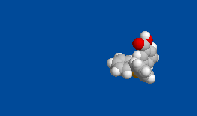Self-assembly Ligands for Homogenous Catalysis in the Breit Group
Self-assembly Ligands for Homogenous Catalysis in the Breit Group
An integral part of our research interest in homogenous catalysis is the development of self-assembly ligand systems. These are in principle monodentate phosphine ligands that contain an N-heterocyclic moiety (such as a pyridone or isochinolone). Like the famous base pairs in DNA, they feature a Donor and an Acceptor group for hydrogen bonding. Upon coordination of two ligands to a transition metal, such as Rh or Ru, the backbone of the two monomers connects through hydrogen bonding, forming a self-assembled, bidentate ligand. These supramolecular ligand systems developed in the Breit group have proven to be very effective in valuable catalytic reactions, such as hydrogenations and hydroformylation reactions. The approach was also extended to combinatorial screening of a ligand library, the members of which have complementary hydrogen bonding sites.
Inducing Axial Chirality in a Supramolecular Catalyst

